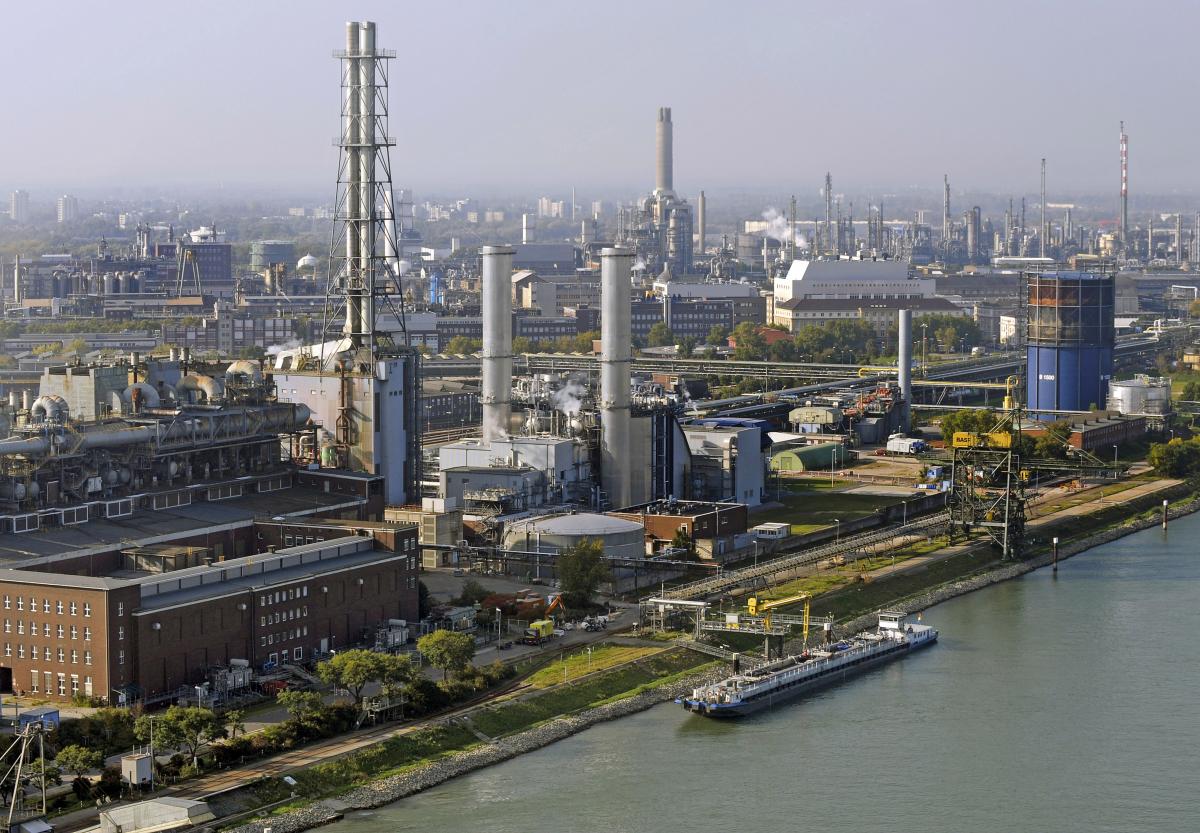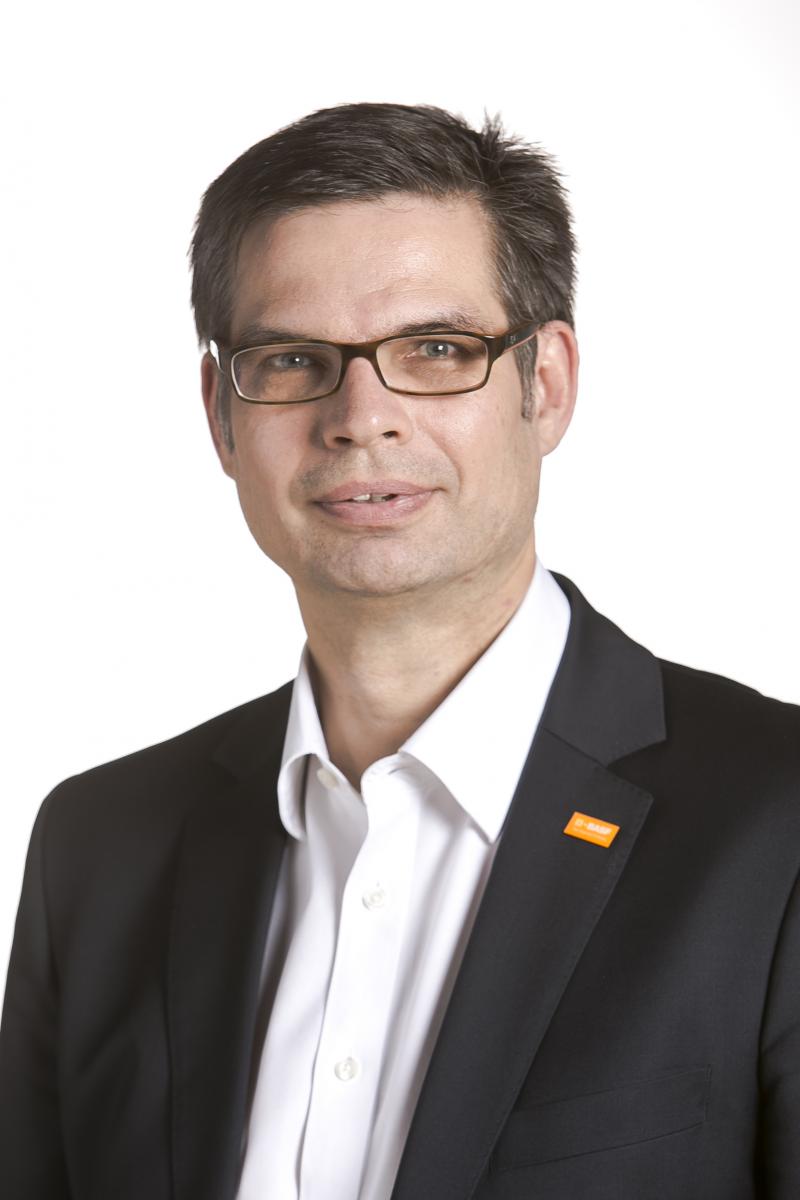BASF has earned a place on the Dow Jones Sustainability Index for an impressive 14th consecutive year. Ethical Corporation talks to the chemical giant’s head of sustainability and finds a company far from complacent
Chemical balance
“Erst denken, dann handeln”. First think, then act. Few companies live out this old German proverb better than BASF. Assiduous, ordered and archetypically scientific, the Rhineland-based chemical giant is a paradigm of careful corporate strategizing followed by no-nonsense execution.
As corporate investments go, BASF is a safe bet. Few of Germany’s largest corporations can date their history back to the pre-Bismarck period (BASF celebrates its 150th anniversary next year). An early pioneer in catalytic processing, synthetic dyeing and chlorine liquefaction, the company also lays claim to the introduction of ammonia synthesis (the crucial step in the manufacture of modern mineral fertilizers).
Today, it continues that innovation, with a portfolio stretching over thousands of products. The firm’s sectoral reach is expansive too, ranging from aerospace, agriculture and construction through to packaging, mass transit, pharmaceuticals and more.
BASF’s corporate culture has seen it emerge as a leader in sustainability. For the past 14 consecutive years, the firm has earned itself a place in the benchmark Dow Jones Sustainability Index. Its inclusion is testimony to a comprehensive, consistent and integrated approach to the issue, says Dirk Voeste, vice-president for sustainable strategy at the firm.
“Being in the DJSI is not a case of being particularly strong in one area or weak in another. You have to perform in all areas to be in the index,” he says. “The way we are able to keep staying in the index is by continually improving our systems,” Voeste adds. “Sustainability has no beginning and no end. It’s a permanent journey of improvement and seeing new trends on the horizon.”
Strategic clarity
BASF’s sustainability strategy holds to what management consultants like to call a “cascade” pattern. The overarching vision is set at the highest level, and then policies and practices are developed to flow down through subsequent tiers of the company. Ultimately, it’s an exercise in “translation” (a favourite word of Voeste) – that is, the conversion of an intangible concept into tangible actions across the entire business.
BASF’s vision is clear. “We create chemistry for a sustainable future,” runs its guiding motif. Adopted in late 2011, the seven-word mantra is impressed on the company’s 112,000 employees around the world at every opportunity.
The explicit link between chemistry and sustainability certainly gives Voeste an enviable mandate. It also affords him a direct reporting line to the company’s chief executive, Kurt Boch. (In early 2012, the sustainability function shifted from the Environment, Health and Safety division into Strategic Planning).
Even so, the mission statement offers little by way of specifics. “In a company the size and breadth of BASF, the definition of sustainability inevitably has to be quite generic to remain universally relevant,” Voeste says. Voeste rejects the idea of a one-size-fits-all approach. Energy efficiency, for instance, marks a top priority for the firm’s chemical manufacturing operations. But when it comes to its nutrition business, poverty and public health emerge as driving concerns.
To narrow down the focus, therefore, BASF has come up with what it calls its Sustainable Solutions Steering methodology. Step one is to take a long, hard look at the “mega-trends” facing the planet. Think climate change, population increase (the planet will play host to an estimated 9 billion by 2050), longevity, urbanisation (already more people live in cities than the countryside) and growth of the middle classes.
The next step is to identify what BASF’s clients are demanding and what its markets will want in the future. So emissions reduction, for example, or the conservation of biodiversity, or cost savings. The list goes on. Voeste has produced a list of three primary focus themes: 1) resource efficiency, environment and climate; 2) food and nutrition; and 3) improving quality of life.

Product ratings
By Voeste’s admission, this still leaves the company with a wide gamut of issues. So, by way of a next step, the methodology proposes an evaluation of the sustainability performance of BASF’s products in their market applications. Each product is assessed by the risks and opportunities that it presents around BASF’s three focus themes. Over the past 18 months or so, the company has carried out more than 50,000 such assessments.
Emerging from this huge sorting exercise is a breakdown of BASF’s portfolio into sustainability-related categories. Top of the list are the company’s “accelerator” products, which comprise 22% of total market applications.
An illustrative case is the firm’s water-based Joncryl polymer technology, which is used for high performance inks and coating. Thanks to a non-conventional processing technology patented by BASF, the product provides a more environmentally friendly alternative to traditional solvent-based products.
The vast bulk (73%) of BASF’s product applications meet basic sustainability standards. These are given “performer” status. The remainder fall into the “transitioner” box (4.5%), which are judged to have a specific sustainability issue that needs addressing, or the “challenged” bucket (0.5%), which is reserved for products with a “significant sustainability concern”, such as the potentially toxic polyfluorinated compounds used in the company’s packaging business.

Step Three in BASF’s Sustainable Solutions Steering methodology commits the company to develop action plans. The idea here is to maximise the market opportunities and correct the problems highlighted by its evaluation process, Voeste explains.
With regard to the former, BASF has created five R&D “growth clusters” around what it believes could be breakthrough technologies towards its sustainable future goal: non-GM plant biotechnology, industrial biotechnology, raw material change, nanotechnology and energy management. Its targeted sales in the five areas amount to €2-4bn by 2015.
Co-operative stance
Analysing more than 50,000 applications is no small undertaking. And needless to say, Voeste and his team in BASF’s core sustainability unit have not undertaken it single-handedly. Instead, he’s sensibly opted for a co-operative approach.
That goes as much for BASF’s internal operations as much as it does for sustainability issues outside its immediate reach. On in-house issues, BASF operates a “Sustainability Business Community”: essentially, a network of dedicated sustainability representatives who occupy different functions in each of the company’s 14 main business units.
“They spearhead discussions around sustainability issues in their individual business areas, as well as providing feedback to the corporate sustainability function,” Voeste says. “This makes our methods much more robust because they have been developed by people within the business.”
The impacts of the approach have been impressive. BASF has reduced the withdrawal of drinking water by 25% since 2010, for instance (half way towards its 2020 target of 50%). As for energy-related impacts, the chemical giant has reduced its greenhouse gas emissions per metric ton of sales product by 34% compared with its 2002 baseline. Energy efficiency, meanwhile, has increased by 20% over the same period.
There is work to do, of course. The total GHG emissions from its global operations still amount to a colossal 21.9m tonnes of carbon dioxide every year. But co-operation between its production facilities provide hope of progress. Under the “verbund” system, the waste heat from one plant is piped to another plant, where it us used as energy. BASF saved around 17m MWh in 2012 this way – equivalent to 3.5m tonnes of carbon emissions.
Similarly, Voeste and his colleagues have engaged about 1,500 people across the company to help with the evaluation phase of the Sustainable Solutions Steering methodology. “In this way, they can position our products better in the market, but they can then ensure our customers get the maximum sustainability value out of our products too,” he says. “We’ve carried out more than 160 workshops in the last two years with experts on the product – on the marketing side, R&D, technology, product stewardship, communications, regional or cultural aspects if needed.”
The company has engaged its customers and suppliers in the same fashion. Voeste is a strong believer in managing through dialogue and “co-creation”, not through corporate edict. He cites an example from the company’s packaging business, where BASF has worked with partners within the chemical industry to create an alternative to polyfluorinated compounds (PFCs). The result is two products that lack the toxic and persistent properties of PFCs: the recyclable water-based adhesive Epotal, and the biodegradable paper coating Ecovio.
Try as BASF might, finding sustainable alternatives for those products designated as “challenging” may not be possible. The company has set itself the goal of developing in-depth action plans for every one of these applications by the end of next year. These might comprise an R&D project, substitution or more product stewardship. If a solution proves impossible, then Voeste insists that the company will phase out the product in question.
BASF’s commitment to co-operation extends to its industry competitors, too. “You don’t compete on sustainability. You compete on your offering in the market,” Voeste says. He points to the example of Together for Sustainability, an industry initiative that avoids the need for multiple supplier audits through the introduction of a single, standardised due diligence process.
BASF is an active participant in business-led forums such as CSR Europe and the World Business Council for Development. Under the aegis of the latter, for example, it has embarked on a process to chart the social and environmental footprint of all its 380 or so office buildings.
As Voeste’s earlier comment about the need for continuous improvement suggests, BASF is far from having answers to all the sustainability issues it faces. Voeste accepts that the global challenges around water (in terms of scarcity and quality) pose a growing concern. Questions around the cost and availability of natural resources are growing louder, too.
But BASF’s policy of methodically translating its overarching sustainability vision into day-to-day actions stands it in good stead – both as a business and as a corporate citizen.
BASF: Global building audits
In 2011, BASF signed the Manifesto for Energy Efficiency in Buildings issued by the World Business Council for Sustainable Development. The pledge commits it to reduce energy use in its 380 or so commercial properties. To that end, the chemical company began a worldwide voluntary energy audit of its entire portfolio of office buildings last year.
The process began with six pilot studies, chosen because of their diversity. These comprised office buildings in Ludwigshafen, Germany; Antwerp, Belgium; Wyandotte, Michigan; Demarchi near São Paulo, Brazil; Dubai, United Arab Emirates; and Kuala Lumpur, Malaysia. International consulting and engineering company Drees & Sommer is undertaking the audit process.

“This project will provide a detailed overview of the condition of BASF’s real estate portfolio and will highlight where the biggest leverage is, which optimization measures should be implemented first with quick wins prioritised,” the company states.
Among the challenges BASF faces is the global ubiquity of green building standards. In the absence of a worldwide consensus, the chemicals company has developed its own assessment method tailored to the company’s own specific characteristics. The end goal will be to develop and implement energy optimization plans for every office building. The company hopes to complete the audits by the end of 2015.
In total, BASF has more than 1,200 sites in its whole corporate property portfolio. In 2012, meanwhile, the company approved internal sustainability guidelines to govern all office real estate transactions, new office projects, office renovations and refurbishments.
Dirk Voeste, vice-president, sustainability strategy, BASF

Born in Hagen, Germany, in 1962, Dirk Voeste is a specialist in biotechnology and agricultural botany. In 1994, he received a doctorate from University of Bonn in Germany. He also holds an MPhil in Post Harvest Technology from the Cranfield Institute of Technology in the UK. He started his career as a project manager for spaceflight experiments at Nasa. Before joining BASF’s Plant Science Holding as senior manager of global seed activities, he worked for Danish agribusiness firm Danisco Seed (now Maribo Seed).
Before becoming vice-president for sustainability strategy, Voeste held a number of roles in BASF’s crop protection division, including head of sustainability and product stewardship.
Profile: BASF (full year 2013)
Sector: world’s leading chemical company
Headquarters: Ludwigshafen, Germany
Operations: in more than 80 countries
Employees: 112,000
Sales: €74bn
Net income: €4.8bn
R&D expenditure: €1.8bn
On-site supplier audits: 155
Primary energy usage: 59.2m MWh
Total water withdrawal: 1,781m cubic metres
Greenhouse Gas Emissions: 23m tonnes of CO2 equivalent
Waste: 2.5m tonnes
Investment in environmental protection: €325m
Donations: €49.2m
Website: www.basf.com
BASF business strategy Chemicals Management spotlight management strategy

